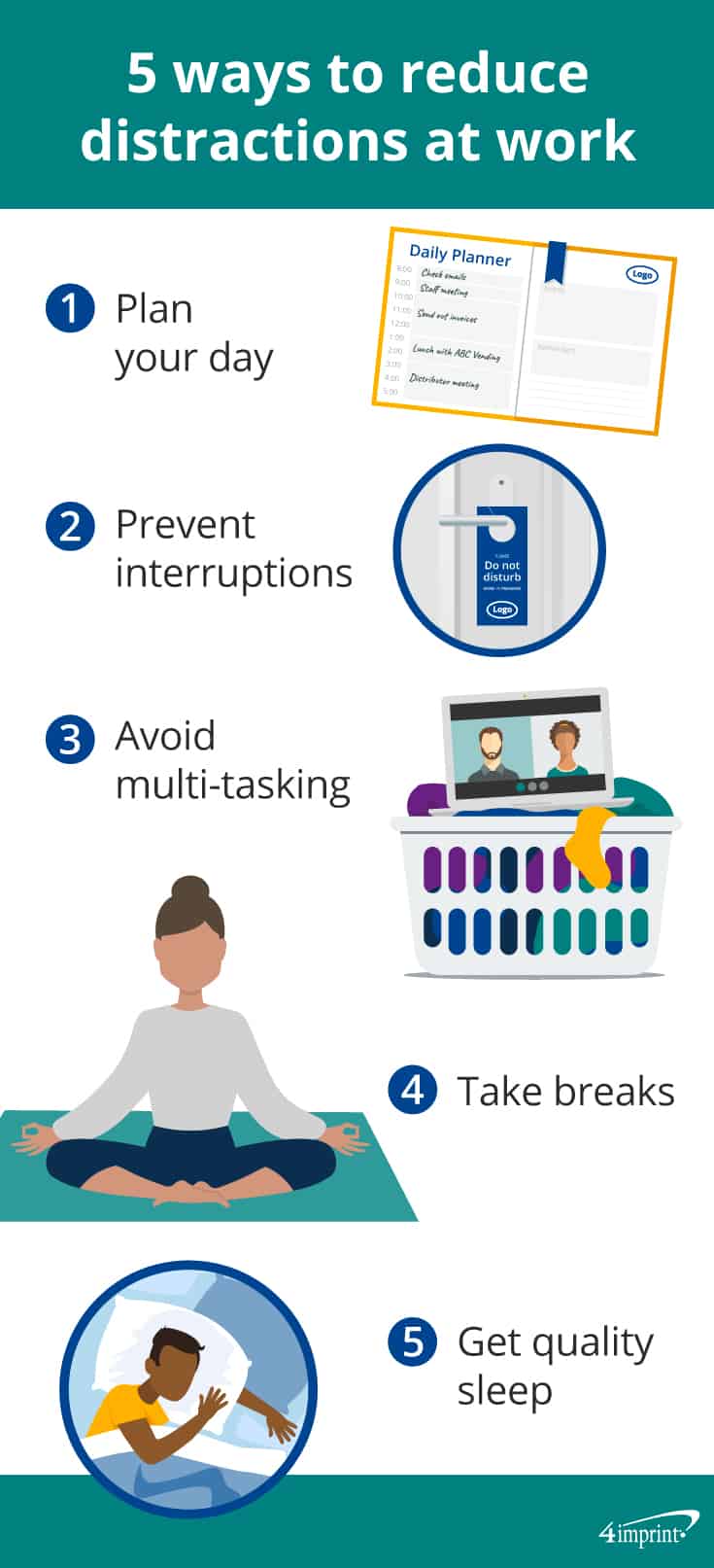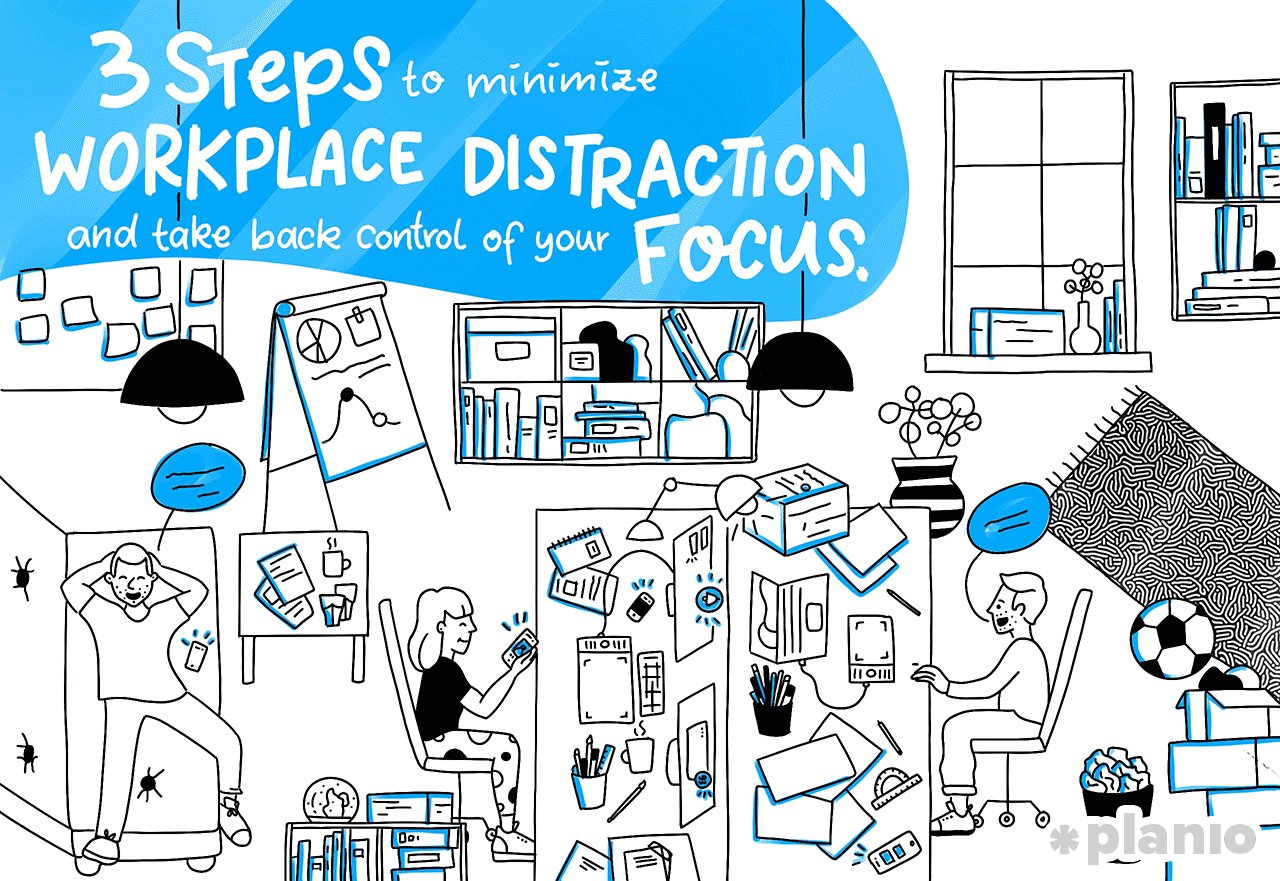One Way To Control Distractions Is To

In today's hyper-connected world, distractions are ubiquitous, constantly vying for our attention and hindering productivity. But a growing body of research suggests a simple yet effective method for reclaiming focus: environmental neutrality. By intentionally curating workspaces and routines that minimize sensory overload and emotional triggers, individuals can significantly enhance their ability to concentrate.
The concept of environmental neutrality, while not new, is gaining traction as a practical strategy for mitigating the negative impacts of constant digital and physical interruptions. The goal is to create an environment that is neither overly stimulating nor overly dull, fostering a state of calm alertness conducive to deep work. This approach emphasizes mindful design and behavioral adjustments.
The Science Behind Neutrality
Studies in cognitive psychology and neuroscience reveal the profound impact of environmental stimuli on attention spans. Overstimulation can lead to cognitive overload, while monotonous environments can result in boredom and decreased motivation. According to a study published in the Journal of Environmental Psychology, workspaces with minimalist designs and neutral color palettes are associated with improved focus and reduced stress levels.
Dr. Anya Sharma, a leading researcher in attention management at the National Institute of Mental Health, emphasizes the importance of mindful design. "Our brains are constantly processing information from our surroundings. By consciously minimizing irrelevant stimuli, we free up cognitive resources for the tasks at hand," she explains.
Practical Applications of Environmental Neutrality
Creating a neutral environment involves several key steps. First, decluttering physical workspaces is essential. This includes removing unnecessary objects, organizing materials, and establishing a designated area for focused work.
Secondly, minimizing visual and auditory distractions is crucial. This can be achieved through the use of noise-canceling headphones, white noise generators, or simply finding a quiet location. Consider using apps or browser extensions designed to block distracting websites and notifications during specific work periods.
Thirdly, incorporating neutral sensory elements can be beneficial. This might include using natural light, maintaining a comfortable temperature, and incorporating subtle, calming scents like lavender or chamomile. The Environmental Protection Agency (EPA) provides guidelines on creating healthy indoor environments, emphasizing the importance of air quality and lighting.
The Role of Routine
Beyond physical surroundings, establishing neutral routines can further enhance focus. Consistent sleep schedules, regular breaks, and mindful transitions between tasks help regulate the body's natural rhythms and minimize mental fatigue. The Pomodoro Technique, which involves working in focused 25-minute intervals followed by short breaks, is a popular strategy for maintaining concentration without burnout.
Sarah Chen, a project manager at a tech startup, found that implementing environmental neutrality strategies drastically improved her productivity. "I used to struggle with constant distractions and felt overwhelmed by my workload. Now, with a dedicated workspace and a consistent routine, I can focus more effectively and achieve my goals," she states.
Potential Impact and Considerations
The principles of environmental neutrality can be applied in various settings, from offices and schools to homes and libraries. By creating environments that support focus and minimize distractions, individuals can enhance their cognitive performance, reduce stress, and improve overall well-being. The benefits extend beyond productivity to encompass creativity and mental clarity.
However, it is important to note that environmental neutrality is not a one-size-fits-all solution. Individual preferences and sensitivities vary, and what works for one person may not work for another. Experimentation and self-awareness are key to finding the optimal balance between stimulation and tranquility.
Furthermore, environmental neutrality should not be mistaken for sensory deprivation. The goal is not to eliminate all sensory input but rather to filter out irrelevant or disruptive stimuli. A completely sterile environment can be just as detrimental to focus as a chaotic one.
In conclusion, embracing environmental neutrality offers a practical and evidence-based approach to managing distractions and reclaiming focus in an increasingly demanding world. By consciously curating our surroundings and routines, we can cultivate a state of calm alertness that empowers us to achieve our goals and thrive in the face of constant interruption.
















.png)

